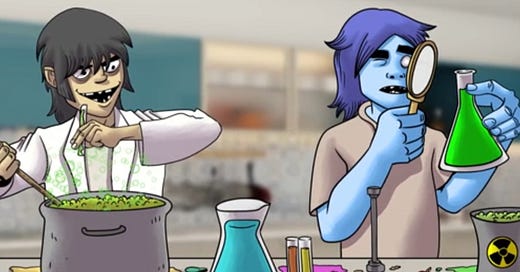Gene therapies have revolutionized medicine. They are a functional cure for diseases by replacing mutated copies of genes in the patient’s cells with a functional copy. To date, only three gene therapies have been approved in the US: Luxturna, Zolgensma and now Hemgenix. With each proceeding gene therapy, the price has escalated. Luxturna costs $425k per eye. Zolgensma was the most expensive medicine in the world, at $2.125 million until Hemgenix came along a few weeks at an insane $3.5 million to treat Hemophilia. As the majority of people cannot afford these prices even with a viral GoFundMe campaign, insurance companies now have the godlike ability to determine who lives or dies.
The generally accepted cost estimates for drug development are between $500 million to $2 billion. While no drug company has ever shown receipts, it’s not hard to imagine that drug companies might be overexaggerating to give them freedom to charge whatever they want. Since Hemgenix hasn’t actually been on the market yet, let’s look at the last gene therapy approved, Zolgensma. It generates around $1.5 billion to $2 billion a year for Novartis while they pull in around $52 billion total revenue annually with a net income of over $8 billion. Look, don’t get me wrong, I believe that pharmaceutical companies should make profit off the drugs they develop. But like, Zolgensma didn’t require geniuses to develop. It’s a pretty standard gene replacement for Spinal Muscular Atrophy (SMA) They put the SMN1 gene in a standard AAV viral capsid. Any reasonable genetic engineer could have designed it in an hour. So what exactly do these drug companies deserve all this money for?
Remember when, in a short period of time COVID vaccines were distributed to everyone who wanted one? In the 3 years since Zolgensma's approval, only 2,300 people have been treated. At a rate of about 1 in 7500 births, there are around 500 babies born every year in the US alone with SMA. The amount of the drug available doesn’t even come close to meeting the demand. So what is going on? They have the money and resources to get the drug to people so what is stopping them?
It’s not completely clear. AAV gene therapy manufacturing can be a bottleneck but at $2.125 million a pop for the drug, they could just build more manufacturing capacity? Novartis did just that but somehow didn't increase distribution in Q3 2022? The other theory is that they just can’t find enough customers to pay that amount of money. This was the case with Glybera, the first ever gene therapy approved. The $1 million price tag was more than anyone could afford and insurance wasn't keen on covering it so the company just pulled it from the market. That’s correct, there exists a gene therapy that went through clinical trials and works but no one has access to it because a pharmaceutical company can’t make enough money off of it. That doesn’t make any sense. I’ve always wondered pharma companies don’t just lower the price to increase the volume and make up the loss in profit from the extra purchases? That’s a win for patients and the company.
I think it comes down to two things:
1) Lack of competition in the marketplace due to government regulations that give companies monopolies on newly developed drugs. They don’t need to lower the price.
2) They are basically price fixing the market. If the new Hemgenix costs less than the previous Zolgensma, the next gene therapy can’t continue to reach for an even higher price.
Now we are all stuck in an incredulous position. Gene therapies developed going forward will always need to be subsidized. Everyone will be dependent on approval by their insurance or their governmental health system. See, this isn’t a US local problem. Most countries don’t and won’t have access to the cutting edge gene therapies because they cost so much. Even socialized medical systems aren’t always willing to pay. Countries like Brazil still don't have access to Zolgensma much less Hemgenix.
The pharmaceutical industry is always a tough moral contradiction to me. Yes, they make drugs that help people and save lives but that is not their primary goal, profit is, and so not everyone gets access to drugs they need to live.
So what can we do about it?
Biohacking and medical tourism could meet some of this need but I don’t think it can meet it all. Risk in the medical system isn’t something that’s well tolerated and rightly so, people’s lives are at stake. We need a medical system that is much closer to a hybrid of biohacking and what we have now. We need to allow people who are willing to take risks to do it under proper supervision and care. This will not only benefit countless numbers of people but provide well needed data on the efficacy of cutting edge drugs.
Lives are at stake. We all deserve better.





This is a Stat worthy piece with detailed information and some pithy conclusions. I can only hope that future therapies set a new downward trend on pricing but as Dr. Zayner points out the opposite trend is pretty strongly evident.
We need control of this science, we need to all learn it so well we don’t need big pharma. We need to implement this in schools now- and for everyone- and FREE.